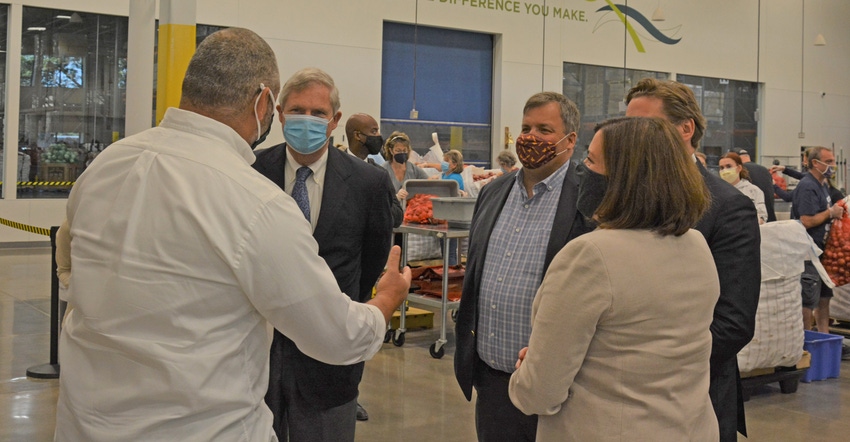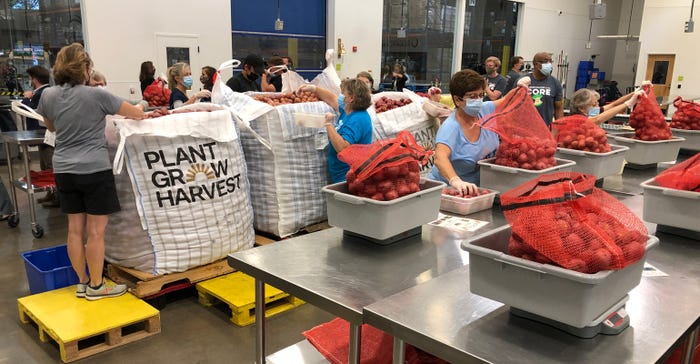
During a whirlwind trip to Minnesota last week to meet with farmers and others to discuss the drought, USDA Secretary Tom Vilsack visited Second Harvest Heartland, a large food bank in Brooklyn Park Aug. 13.
His stop here gave Vilsack, along with Minnesota agriculture commissioner Thom Petersen and Rep. Dean Phillips, the chance to tour the 230,000-square-foot facility and meet privately with local leaders of area agencies and organizations to discuss regional food needs.
 VOLUNTEERS NEEDED: When USDA Secretary Vilsack visited Second Harvest, volunteers were repacking loads of potatoes into smaller boxes for easier distribution. The food bank relies on hundreds of volunteers, who work in shifts to prepare foods for shipment. Last year, people stepped up to provide more than 72,000 volunteer hours.
VOLUNTEERS NEEDED: When USDA Secretary Vilsack visited Second Harvest, volunteers were repacking loads of potatoes into smaller boxes for easier distribution. The food bank relies on hundreds of volunteers, who work in shifts to prepare foods for shipment. Last year, people stepped up to provide more than 72,000 volunteer hours.

Second Harvest, the largest food bank in the U.S., moved to its new renovated world headquarters in spring 2020 in the west Minneapolis suburb. It serves 59 Minnesota counties, plus food banks outstate and in North Dakota and Wisconsin.
Following a closed-to-the-press meeting, Second Harvest staff gave a walking tour of the facility to Vilsack, Petersen and Phillips. Of most interest to Vilsack was the “clean room,” a USDA-certified refrigerated site where bulk quantities of meat and poultry are repackaged by volunteers into smaller packages for people.
“This is a remarkable facility,” Vilsack said during a press conference. “I really like the ‘clean room.’ There are only five in the country, and this is one of them.”
SNAP benefits go up
Vilsack talked about various USDA programs available to assist food banks and those who are hungry, such as emergency food assistance and subsidized school meals. He also alluded to a forthcoming announcement, which was released Aug. 16, about updating the Thrifty Food Plan —which is used calculate Supplemental Nutrition Assistance Program (SNAP) benefits.
After reviewing plan data, USDA announced a cost adjustment — the first time the purchasing power of the plan has changed since it was first introduced in 1975 — and revised the plan to include more fish and red and orange vegetables. As a result, the average SNAP benefit will increase by $36.24 per person per month, or $1.19 per day, for fiscal year 2022, which begins Oct. 1. In Minnesota, under the previous Thrifty Food Plan, the state received $630 million, according to USDA. With the revision, it will get an estimated $808 million for the program in fiscal year 2022.
Vilsack also made stops in Cannon Falls and St. Peter to visit with farmers and other ag-related businesses and organizations.
About the Author(s)
You May Also Like






